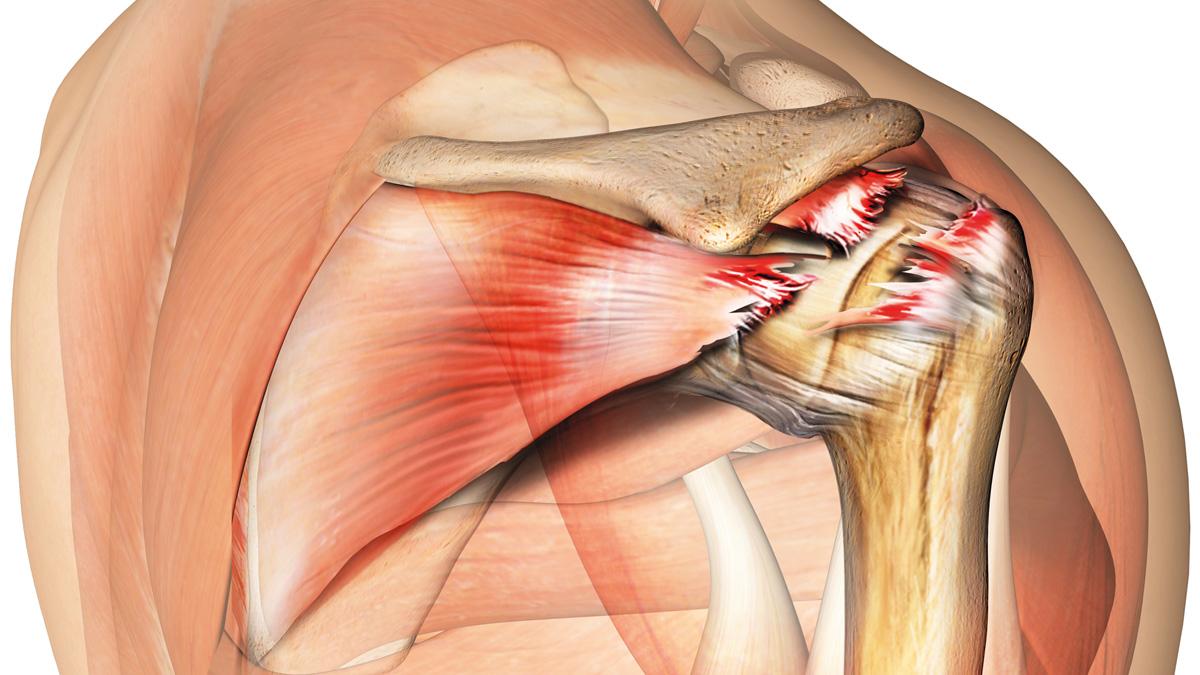
Shoulder pain is a common musculoskeletal complaint, of which rotator cuff-related pain is the predominant diagnosis.
Clinical guidelines recommend exercise for rotator cuff-related pain but make no distinction about the type of exercise prescribed. This review aimed to estimate the average effect of resisted and progressive exercise and non-resisted or non-progressive exercise, both compared to no treatment or placebo.
Method
Sensitive searches were performed in five databases (Cochrane CENTRAL, Medline, Embase, CINAHL, OpenGray) and two clinical trial registries (ClinicalTrials.gov, WHO). Randomised controlled trials of exercise compared to no treatment or placebo in participants over 16 years of age with a primary complaint of rotator cuff related pain of any duration were included. Exercise was classified as resisted and progressive (i.e. explicitly stated how resistance was applied and that there was progression of the volume or the load, or both, over time) or non-resisted or non-progressive (i.e. explicitly stated that load was not applied or not progressed, or both).
The primary outcome was a composite measure of pain and function measured on any shoulder-specific scale (converted to a 0-100 scale, with 0 being no pain or dysfunction). Secondary outcomes were pain (overall, with activity, and pain at rest; all converted to a 0-100 scale, with 0 being no pain) and the number of participants experiencing an adverse event. Medium-term (6 weeks to 6 months) follow-up was used as the primary timepoint. Two reviewers independently identified trials for inclusion and extracted data, with discrepancies resolved through discussion or by arbitration from a third reviewer. The Cochrane risk of bias tool was used to evaluate trial quality, with all quality ratings extracted from a recent Cochrane review (Page et al, 2016). Confidence in the evidence was conducted using the Grading of Recommendations Assessment, Development and Evaluation (GRADE) approach. Random effects meta-analysis was used to calculate the mean difference and 95% confidence interval (CI) for the composite measure of pain and function and the pain-related secondary outcomes, and the relative risk and 95% CI for adverse events.
Results
Seven trials (468 participants) were included in the analyses: 4 trials (271 participants) evaluated resisted and progressive exercise and 3 trials (197 participants) evaluated non-resisted or non-progressive exercise. The mean age of participants was between 47 and 61 years old and trials largely included males. Baseline composite pain and function was comparable (33 to 50 out of 100). Compared to no treatment or placebo, resisted and progressive exercise reduces composite pain and dysfunction by a mean of 15 points (95% CI 9 to 21, 4 trials, 271 participants), overall pain by 11 points (95% CI 6 to 16, 3 trials, 197 participants), pain with activity by 25 points (95% CI 14 to 36, 2 trials, 135 participants), and pain at rest by 23 points (95% CI 14 to 32, 2 trials, 135 participants). All results were classified as low certainty.
The effect on adverse events is unclear as no trials reported whether any adverse events occurred. No effect was observed for non-resisted or non-progressive exercise. Compared to no treatment or placebo, non-resisted or non-progressive exercise reduced composite pain and dysfunction by a mean of 4 points (95% CI -2 to 9, 3 trials, 197 participants), overall pain by 3 points (95% CI -1 to 8, 3 trials, 197 participants), pain with activity by 3 points (95% CI -5 to 12, 3 trials, 197 participants), and pain at rest by 2 points (95% CI -7 to 10, 2 trials, 174 participants). Adverse events (short term increase in pain) may be higher with non-resisted or non-progressive exercise compared with placebo (risk ratio 3.77, 95% CI 1.49 to 9.54, 1 trial, 116 participants). Again, all results were classified as low certainty.
Implications
Resisted and progressive exercise provides an uncertain clinically meaningful improvement in pain and function compared to no treatment or placebo among people with rotator cuff related pain. In contrast, there is low certainty evidence of no benefit in all outcomes with non-resisted or non-progressive exercise.
Expert view:
Carol Clark,research officer MACP, professor of physiotherapy, head of rehabilitation and sport sciences, Bournemouth University
Kevin Hall, knowledge exchange officer MACP, advanced practitioner WSHT NHS Trust, NIHR academy member
Exercise is a cornerstone of therapeutic intervention, but its efficacy can be difficult to prove, particularly with the challenges of measuring exercise adherence. Adherence is difficult to measure and it can be hard to determine if authors are reporting low efficacy or low adherence.
These results encouraged thinking about the concept of ‘uncertainty’. Dealing with uncertainty is a feature of physical therapy that needs acknowledging and addressing as it influences our clinical decision-making.
The results must be considered in the context of the existing evidence base, which provides growing support for therapeutic exercise. Although there is good evidence for exercise, there is uncertainty over the content and dose of these exercise programmes.
We would encourage practitioners to continue using exercise interventions, tailor them to individual needs, implement evidence-informed strategies to promote adherence and work with patients and stakeholders to improve their effectiveness.
Implications for research requires considering methodologies that best address the question, minimising the risk of bias in trials, and co-creating effective outcome measures with patients.
PEDro
This evidence summary was provided by PEDro. PEDro is the Physiotherapy Evidence Database, a free database of randomised trials, systematic reviews and clinical practice guidelines in physiotherapy.
See PEDro’s infographic relating to this evidence summary
See PEDro’s journal club relating to this evidence summary
Citations
Naunton J, et al. Effectiveness of progressive and resisted and non-progressive or nonresisted exercise in rotator cuff related shoulder pain: a systematic review and metaanalysis of randomized controlled trials. Clinical Rehabilitation. 2020;34(9):1198-216.
Articles cited in this post: Page MJ, et al. Manual therapy and exercise for rotator cuff disease. Cochrane Database of Systematic Reviews. 2016; Issue 6
Number of subscribers: 2




































